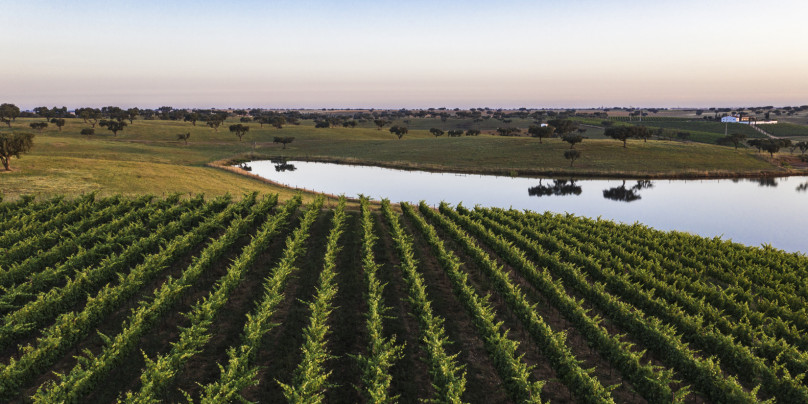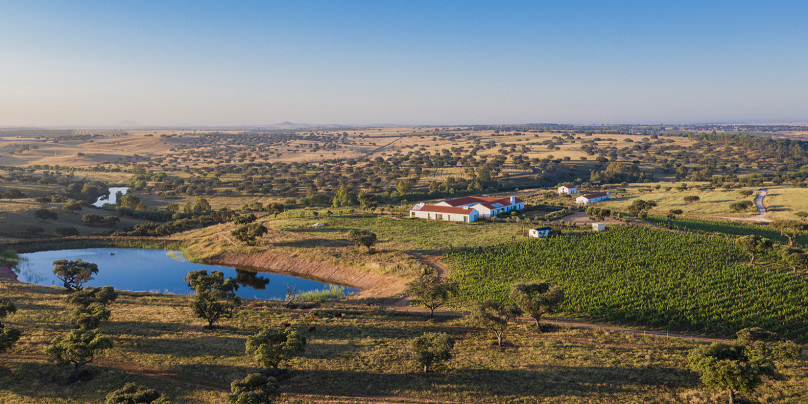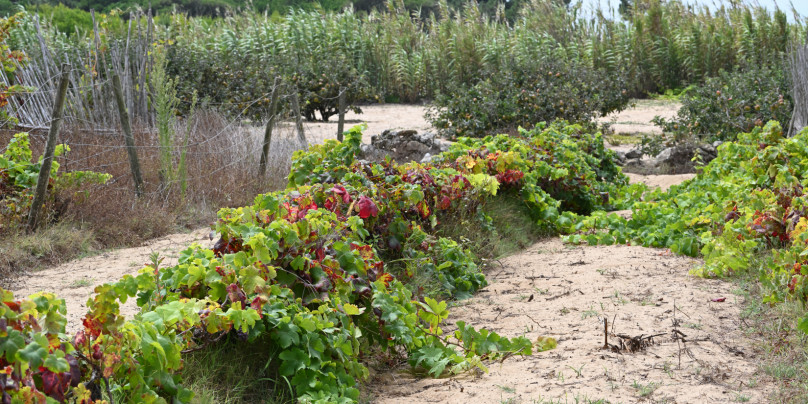It is in the Tejo wine region that fruity whites with tropical aromas and young reds with soft tannins are born. Land of monasteries, cities, towns, and farms, with a river to share its name, it is full of nooks - and crannies - to be discovered.
Painted by the sub-regions of Tomar, Santarém, Chamusca, Cartaxo, Almeirim and Coruche, it is also home to the Lusitano Purebred horse. Discover with us this region, a stage of typically Portuguese traditions that belong to the Templars Route.
1. Templar Castle and Convent of the Knights of Christ, Tomar
A World Heritage Site since 1983, the Castle and the Convent of Christ of Tomar were built on a Roman place of worship, keeping centuries of history.
From D. Afonso Henriques to the present day, these monuments have many stories to tell. We begin in 1160, when, according to legend, the first Portuguese king donated the area to the knights of the Time of Jerusalem, and it was they who chose the name of the land between the rivers Tejo and Mondego: Tomar (Tamará, sweet waters).
To get to know, up close, the magic of this place, we make a suggestion. Go down to the city through Mata dos Sete Montes and pass through Praça da República to the sound of the bells of São João Batista church. Feel the waters of the Nabão River and sunbathe in the green Mouchão Park. Cross the Old Bridge with the mirrored views of the city and finish with the Castle.
2. Almourol Castle, Santarém
Still, in the historical context, we recommend you visit the enigmatic Almourol Castle, a symbol of the Christian Reconquest.
It is in the center of an islet in the Tejo river that we can find this castle, a landmark of the reconquest of the Portuguese empire during the Middle Ages, at the time under the name Almorolan. Along with the castles of Tomar, Zêzere, and Cardiga, it formed the defensive line of the Tagus. In the 19th century, it was restored in the Romantic style.
3. Rural and Wine Museum, Cartaxo
If you prefer to travel in time and through gastronomy, we present the Rural and Wine Museum of Cartaxo. Here, we are invited to know and experience the traditions of the rural world, the culture of the vine, and the production of wine.
Through thematic spaces, we can explore, in detail, how bread and olive oil were made, how the wine was produced, and the grape harvest. The bullfighting culture is also one of the themes of this museum. Finally, we end the visit with a toast in a traditional tavern.
4. Plaza de Toros, Almeirim
Almeirim has always been allied to bullfighting traditions and has maintained its bullring since 1938, stage of several races and shows for the aficionado public.
If you want to accompany your visit to the Tagus with a concert, fair, or bullfight, the Arena D'Almeirim has what you are looking for!
5. Megalithic Monuments, Coruche
It is in the municipality bathed by the Sorraia river that we finish our Tagus tour, namely to visit the 12 megalithic monuments of Coruche, present since 3 thousand years before Christ. Between dolmens, ante las, and cists, finish your trip through nature discovering the footprints of the past.
Between history, culture, and wine gastromy, we have gathered 5 destinations to start your journey through the Ribatejo traditions. Let yourself be inspired by the Tejo wine region with WINEnROUTE!






